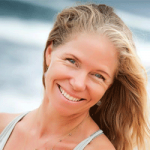Creating Calm from the Outside In
BongkarnThanyakij/Thinkstock
Gretchen Rubin's new book provides a different path to decluttering.
A few years ago, when Marie Kondo’s first book, The Life-Changing Magic of Tidying Up, came out, I was intrigued. Tidying up sounds so reasonable, and who doesn’t want a home free of clutter and chaos? It turns out, “tidying up” is shorthand for “putting everything in a pile in the middle of your room and keeping only what you love.” That, I found out the hard way, is extremely daunting.
What is also daunting is being surrounded by clutter. Gretchen Rubin, who has become known for her work in the happiness realm through her books The Happiness Project and Better than Before, has just released a new title, Outer Order, Inner Calm. I will admit that it’s entirely possible I picked up this book in order to avoid dealing with a pile of papers that had amassed over the school and work week. Confessions aside, Rubin offers some reasonable ways to get a handle on the clutter that fills our lives.
Rubin contends that at the core of sorting through our things must be an understanding of what layer of chaos we can each live with. She writes, “we’ve achieved the right level of order when we can find what we need, feel good in our space, and don’t feel hindered by stuff. For some people, what looks like disorder works just fine.” While I agree — to each her own — I also know that sometimes we don’t even realize the effect that disorder and chaos is having on us and on the other people we live with.
Of the five sections, each filled with bite-sized wisdom on working through a particular issue that comes up as we endeavor to create order, I found two in particular most helpful. In Make Choices, the opening section, Rubin suggests enlisting help if you feel overwhelmed at the thought of tackling that exploding closet. She also suggests asking three questions:
- Do I need it?
- Do I love it?
- Do I use it?
This is an area that has given me pause in the past. Kondo asks the now ubiquitous question, “does it spark joy?” What I have found challenging is that the memory connected to many of my things does spark joy. For Rubin, the follow-up question is, “where does it belong?” If you can’t find a specific home for it, you should not have it in your home.
Minimalism is rampant these days, and for good reason. It is a counterpoint to the excesses of our past. Rubin insists again that what is right for one may not be right for another. It makes me happy to have a shelf filled with my most beloved books, but someone else might prefer a shelf with a solitary seashell.
Rubin offers a section called “Cultivate Helpful Habits.” At the heart of living with a level of clutter that suits us best is our ability to navigate the days and weeks that stretch into months and years. A weekend of emptying closets and cupboards might not mean anything in six months if we don’t do any follow up.
I had to chuckle at her warning to “beware the urge to ‘procrasticlear’” because, of course, the urge to clean up is strongest when I’m facing a deadline. She suggests recognizing that urge and staying with what is actually most important in that moment, what she affectionately calls “the dreaded task.”
Ultimately, Rubin invites her readers to “enjoy what’s special about your space.” It’s easy to think that you would be an organized whiz if you just had a different kitchen or better closet space, but when you focus on creating more order in your current home, you will remember what you love about it and find the grace and gratitude to be happy right where you are.
Keep reading: How I finally let go of paper clutter


